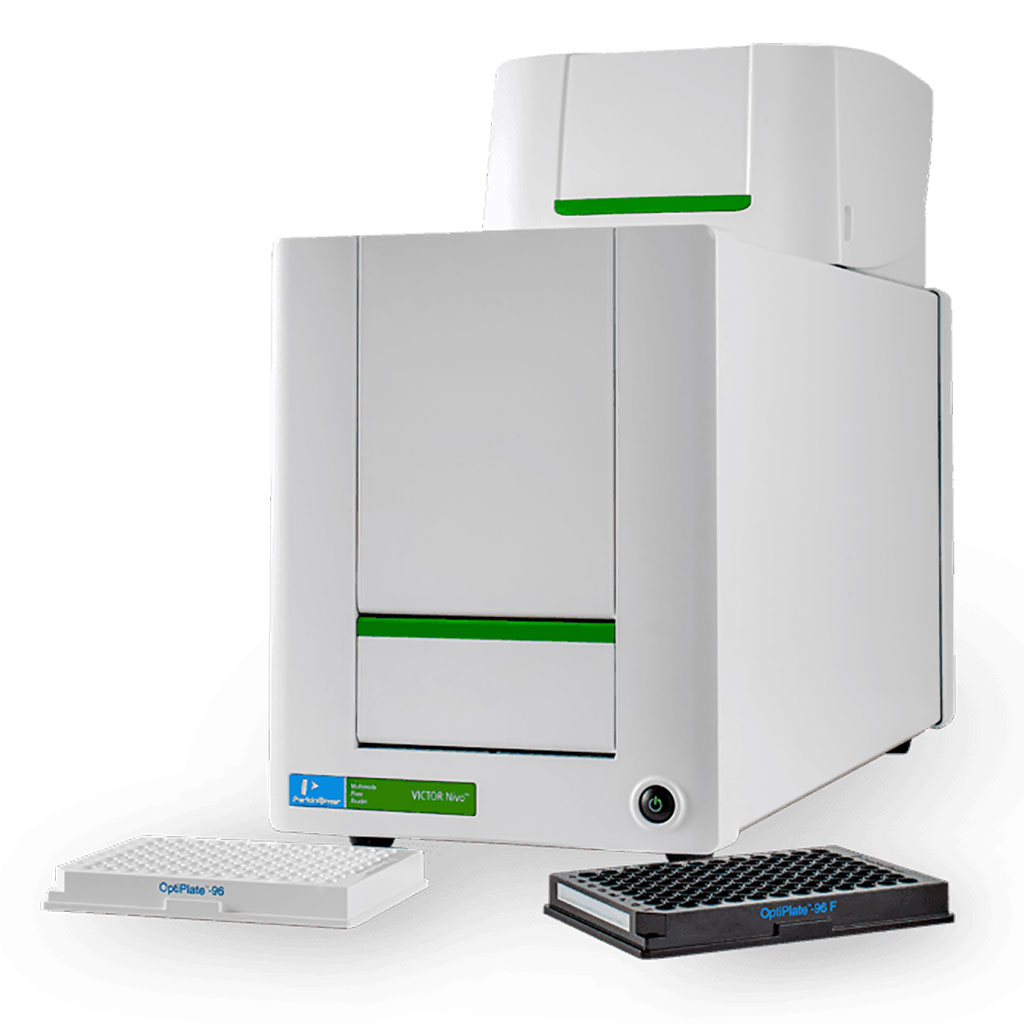Simple Colorimetric Assay Determines Human Mercaptalbumin Concentration
By LabMedica International staff writers
Posted on 30 Jun 2022
Posted on 30 Jun 2022
Human serum albumin (HAS) can take on two forms, mercaptalbumin (HMA) or non-mercaptalbumin (HNA), depending on the redox status of its Cys34. The ratio of HMA and HNA is considered to be a novel biomarker of oxidative stress.
The majority of studies on the redox state of HSA utilize high performance liquid chromatography (HPLC). Several recent studies have also employed mass spectrometry, which yields a higher resolution, thus allowing for finer distinctions between molecular structures. A handful of studies have explored alternative approaches using simple dye-based assays.
Image: VICTOR Nivo Multimode Microplate Reader (Photo courtesy of PerkinElmer)
Clinical Laboratorians at The University of Tokyo Hospital (Tokyo, Japan) collaborated with colleagues at Nitto Boseki Co. Ltd., (Kawasaki, Japan) measured the concentrations of HMA in serum samples from 36 healthy subjects based on absorption changes of Michler's Hydrol. Michler's Hydrol (4,4′-Bis(dimethylamino)benzhydrol) is a blue dye with a maximum absorption at 612 nm, and its absorption decreases when it reacts with a thiol group.
After processing the samples, the solution was incubated further at room temperature for 20 minutes and absorbance at 612 nm (A612) was measured by a 96-well plate Nivo 3F microplate reader (PerkinElmer, Waltham, MA, USA). To evaluate the performance of the assays, the correlation was determined by a linear regression between the HMA concentrations obtained by Michler's Hydrol assay and corresponding reference concentrations obtained by HPLC and Bromocresol purple (BCP) assays.
The scientists reported that HMA concentrations obtained by Michler's Hydrol assay were highly correlated (r2 = 0.97) with reference values obtained by HPLC (HMA %) and BCP assay (total albumin). The HNA% obtained by Michler's Hydrol and BCP assays combined also gave a good correlation (r2 = 0.96) and a small deviation (average 2.4%) with respect to HPLC as a reference method. The use of the HMA/HNA ratio, which is a function of oxidation of Cys34, is considered a potential biomarker to assess the severity of chronic diseases for which oxidative stress is a significant etiological manifestation.
The authors concluded that the concentrations of HMA in human serum can be measured by Michler's Hydrol assay, which is based on an approximation of HMA concentrations with Michler's Hydrol's colorimetric changes mainly due to thiols. The assay accuracy was significantly improved by pre-incubation of a subset of the samples with an alkylating agent (iodoacetamide) and subtracting their absorption from the absorption of corresponding samples without alkylation. Proportions of HMA and HNA were also obtained by combining Michler's Hydrol assay and the BCP assay (for total albumin concentration). The results correlated well with HPLC, which has been established as a standard method for HMA/HNA measurement. The study was published on June 8, 2022 in the journal Practical Laboratory Medicine.
Related Links:
The University of Tokyo Hospital
Nitto Boseki Co. Ltd
PerkinElmer












.jpg)
